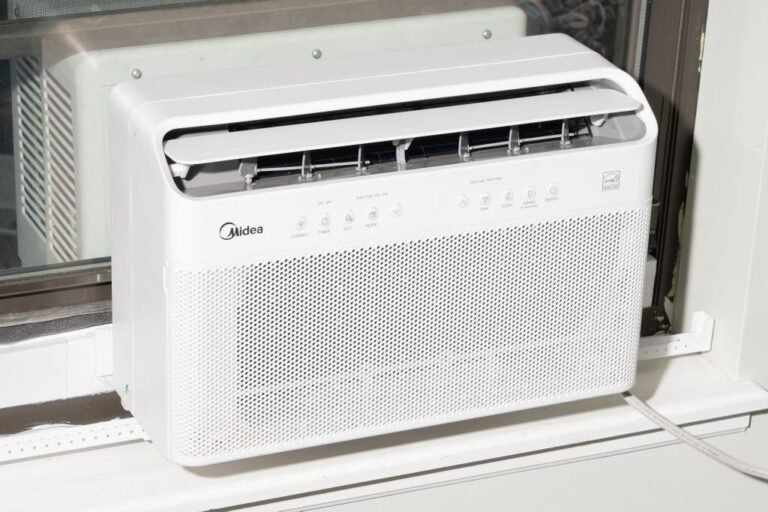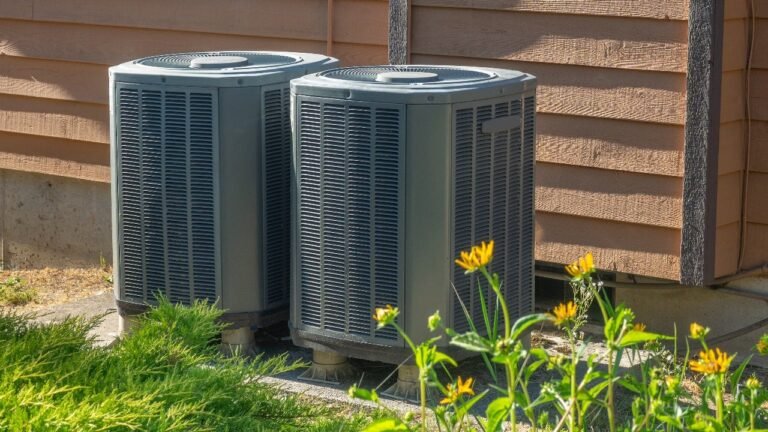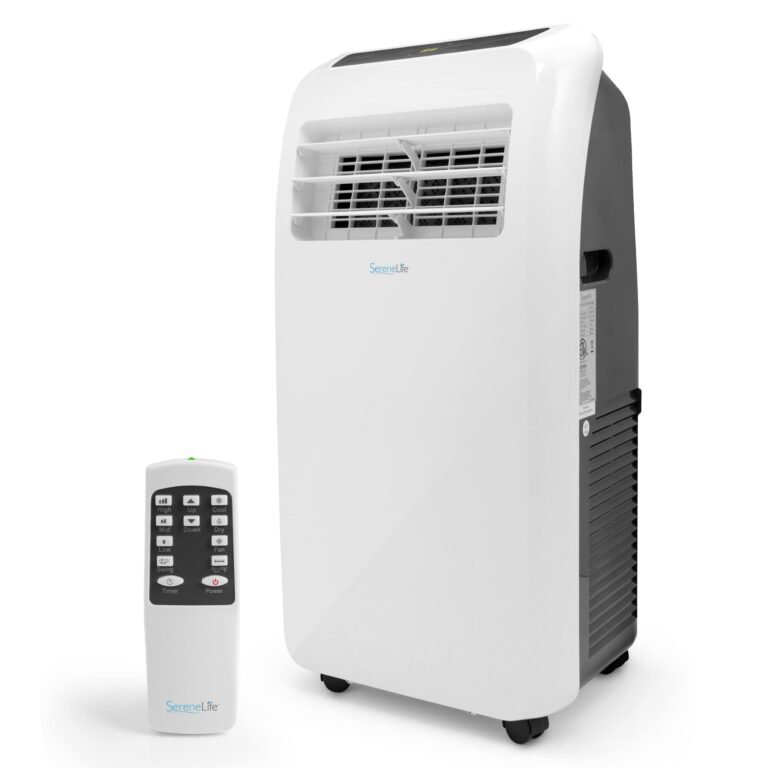How Do I Fix My Air Conditioner in My Car: Quick and Easy Solutions
To fix your car’s air conditioner, check for low refrigerant levels and, if necessary, refill it. Inspect the compressor, condenser, and other components for any damage or leaks, and replace or repair as needed.
Furthermore, clean or replace the air filters and ensure the blower is working properly. Regularly maintaining and servicing your car’s air conditioning system can help prolong its lifespan and ensure optimal performance.
Check The Fuse And Electrical Connections
When your car’s air conditioner is not working properly, there are a few steps you can take to diagnose and fix the issue. Start by checking the fuse for the air conditioner, if applicable. Inspect the fuse and make sure it is not blown. If the fuse is fine, move on to the wiring and electrical connections. Verify that all the connections are secure and there are no loose wires. If you find any loose connections, tighten them properly. In addition to the fuse and electrical connections, you might also consider checking the refrigerant levels in your air conditioning system. Low refrigerant can lead to poor cooling performance. If you suspect low refrigerant, it’s recommended to consult a professional to recharge the system. Taking these steps can help you troubleshoot and fix common issues with your car’s air conditioner.
Assess The Refrigerant Levels
Assessing the refrigerant levels is an important step in fixing your air conditioner in your car. The proper refrigerant levels are essential for the AC system to function efficiently. You can determine if the refrigerant needs to be refilled or replaced by using a pressure gauge or consulting a professional mechanic.
Clean Or Replace The Air Filters
Steps to clean or replace the air filters in your car:
- Start by locating the air filter box, which is usually located near the front of the engine compartment.
- Remove the screws or clips securing the air filter box lid.
- Open the lid and carefully remove the old air filter.
- Inspect the old filter for excessive dirt, debris, or damage.
- If the air filter is dirty or damaged, it is recommended to replace it with a new one.
- If the air filter is slightly dirty, it can be cleaned using compressed air or a vacuum cleaner.
- Make sure to clean any dirt or debris from the air filter box and lid before installing the new or cleaned filter.
- Place the new or cleaned air filter into the air filter box, ensuring it fits securely.
- Secure the air filter box lid with screws or clips.
- Double-check that the lid is properly closed and sealed.
Regularly cleaning or replacing the air filters in your car’s air conditioner is crucial for its efficiency. Clean air filters allow proper airflow and prevent dirt and debris from entering the system. This helps maintain the air conditioner’s performance, prevents clogs, and ensures optimal cooling in your car. By following these simple steps, you can easily clean or replace the air filters and keep your car’s air conditioner running smoothly.

Credit: cielowigle.com
Examine The Condenser And Evaporator Coils
When it comes to fixing your car’s air conditioner, it’s essential to examine the condenser and evaporator coils. These two components play a crucial role in the cooling process of your AC system. The condenser coil is located on the outside of the car, while the evaporator coil is usually situated inside the car’s dashboard.
To inspect the condenser and evaporator coils, start by visually checking for any signs of damage or debris buildup. If you notice any bent fins on the coils, carefully straighten them using a fin comb. Next, use a coil cleaner and a soft brush or cloth to clean the coils. Be sure to follow the manufacturer’s instructions for cleaning products and avoid using excessive pressure that could damage the delicate fins. After cleaning, rinse the coils thoroughly with water to remove any residual cleaner.
Regular upkeep of the condenser and evaporator coils is essential to ensure the proper functioning of your car’s air conditioner. By inspecting and cleaning these coils, you can improve the efficiency of your AC system and enjoy cool air during your drives.
Check The Compressor And Belt
Inspecting the compressor and belt is crucial to maintaining the proper functioning of your car’s air conditioner. The compressor is responsible for compressing the refrigerant and distributing it throughout the system, while the belt drives the compressor. Any signs of damage or wear on these components can lead to a malfunctioning air conditioner.
When inspecting the compressor, check for any leaks, cracks, or damaged wires. Ensure that the electrical connections are secure and that there is no excessive oil residue. Additionally, inspect the belt for fraying or cracking. If you notice any of these signs, it is important to address the issue promptly to prevent further damage and ensure that your air conditioner operates at its best.
Examine The Fans And Blower Motor
One of the key components in the air conditioning system of your car is the fans and blower motor. Understanding their role can help you diagnose and fix issues with your air conditioner. The fans are responsible for circulating air through the condenser and radiator, helping to dissipate heat from the refrigerant. The blower motor, on the other hand, pushes the cooled air from the evaporator and into the cabin of your car.
If you’re experiencing problems with your air conditioner, it’s important to inspect the fans and blower motor first. Check if the fans are turning properly and if there are any obstructions that could be affecting their performance. Additionally, make sure the blower motor is functioning correctly and that there are no issues with its wiring or connections.
By inspecting and troubleshooting the fans and blower motor, you can address common issues such as lack of airflow or poor cooling in your car’s air conditioning system. Regular maintenance and proper care of these components can help ensure the comfort and functionality of your air conditioner.
Test And Inspect The Thermostat
One of the key components of an air conditioner in a car is the thermostat, which is responsible for regulating the temperature inside the vehicle. A properly functioning thermostat is crucial for efficient cooling and comfortable driving experience. To ensure that the thermostat is working correctly, it is important to test and inspect it regularly.
There are several testing and troubleshooting methods to determine the functionality of the thermostat. One method is to check the temperature readings on the AC control panel and compare them with the actual ambient temperature. If there is a significant difference, it may indicate a problem with the thermostat.
Another method is to use a multimeter to measure the resistance of the thermostat. A faulty thermostat may show an open or closed circuit, which indicates that it needs to be replaced.
Regular inspection and testing of the thermostat can help identify any issues early on and ensure that your car’s air conditioner is working optimally. It is recommended to consult a professional mechanic for accurate diagnosis and repair.
Check For Blockages In The System
Blockages in the air conditioning system can greatly affect its performance. It is essential to understand how these blockages can occur and how they can impact your car’s air conditioner. Blockages can happen in various parts of the system, including the condenser, evaporator, and air vents. When these blockages occur, the airflow may be restricted, resulting in inadequate cooling or even no cool air at all.
To identify and clear any blockages in the system, you need to perform a thorough inspection. Start by checking the air filters and ensuring they are clean and free from debris. Next, inspect the condenser and evaporator coils for any signs of dirt, dust, or other obstructions. If you notice any blockages, use compressed air or a brush to remove them carefully.
Additionally, check the air vents to make sure nothing is blocking them, such as leaves or other debris. Clear any obstructions to allow proper airflow. Regular maintenance, including cleaning and servicing the air conditioning system, can help prevent blockages and ensure optimal performance.
Recharge The Air Conditioning System
Recharging the air conditioning system in your car is a simple process that can help restore its cooling efficiency. Here is a step-by-step guide to help you through the process:
- Locate the low-pressure port – typically found on the larger of the two lines coming from the compressor.
- Prepare the refrigerant and attach the charging hose to the canister.
- Connect the other end of the charging hose to the low-pressure port.
- Turn on the engine and set the air conditioning to its maximum setting.
- Slowly open the valve on the canister to allow the refrigerant to flow into the system.
- Monitor the pressure gauge to ensure it reaches the recommended level for your car.
- Close the valve on the canister and disconnect the charging hose.
- Check the air conditioning system for proper cooling.
- If needed, repeat the process until the desired cooling is achieved.
Remember to always wear gloves and goggles when working with refrigerant, and follow the manufacturer’s instructions for the specific type of refrigerant being used. Regularly recharging your car’s air conditioning system can help keep you comfortable during hot summer drives.
Consult A Professional If Necessary
Knowing when to seek professional help for air conditioner repairs: When it comes to fixing your car’s air conditioner, you may be tempted to try the repairs yourself. However, it is important to know when it is time to consult a professional. If you notice any signs of a major problem, such as unusual noises, a lack of cool air, or a strong odor, it is best to leave the repairs to a trained technician. Trying to fix these issues yourself could lead to further damage and potentially expensive repairs.
How to find a reliable automotive air conditioning service provider: If you find yourself in need of professional help, it is important to find a reliable automotive air conditioning service provider. Look for companies with experience and positive customer reviews. Asking for recommendations from friends, family, or trusted mechanics can also help you find a reputable provider. Additionally, make sure the provider has the necessary certifications and licenses, as this shows they have the proper training and qualifications. By taking the time to find a reliable service provider, you can have peace of mind knowing your car’s air conditioner is in good hands.
Frequently Asked Questions On How Do I Fix My Air Conditioner In My Car
How Can I Diagnose The Problem With My Car’s Air Conditioner?
To diagnose the problem with your car’s air conditioner, start by checking if the air is blowing cold or warm. Next, check if the fan is working properly and if there are any odd noises coming from the system. If the issue persists, it’s best to consult a professional for a comprehensive diagnosis.
Why Is My Car’s Air Conditioner Blowing Hot Air?
There are several reasons why your car’s air conditioner is blowing hot air. It could be due to a refrigerant leak, a faulty compressor, a clogged orifice tube, or a malfunctioning thermostat. It is recommended to have a qualified technician inspect and repair your car’s air conditioning system to determine the exact cause of the problem.
How Often Should I Recharge My Car’s Air Conditioner?
There is no set time frame for recharging your car’s air conditioner. It depends on several factors such as the age and condition of your vehicle, how often you use the air conditioner, and the climate you live in. It is recommended to have your air conditioning system inspected and recharged if needed during your routine vehicle maintenance.
Conclusion
To conclude, fixing your car’s air conditioner may seem like a daunting task, but with the right approach, it can be manageable. Remember to start with the basics, such as checking the refrigerant levels and the compressor. Then, proceed to inspecting the condenser and evaporator for any potential issues.
Lastly, don’t hesitate to seek professional help if needed. By following these steps, you can enjoy a cool and comfortable ride in no time.







